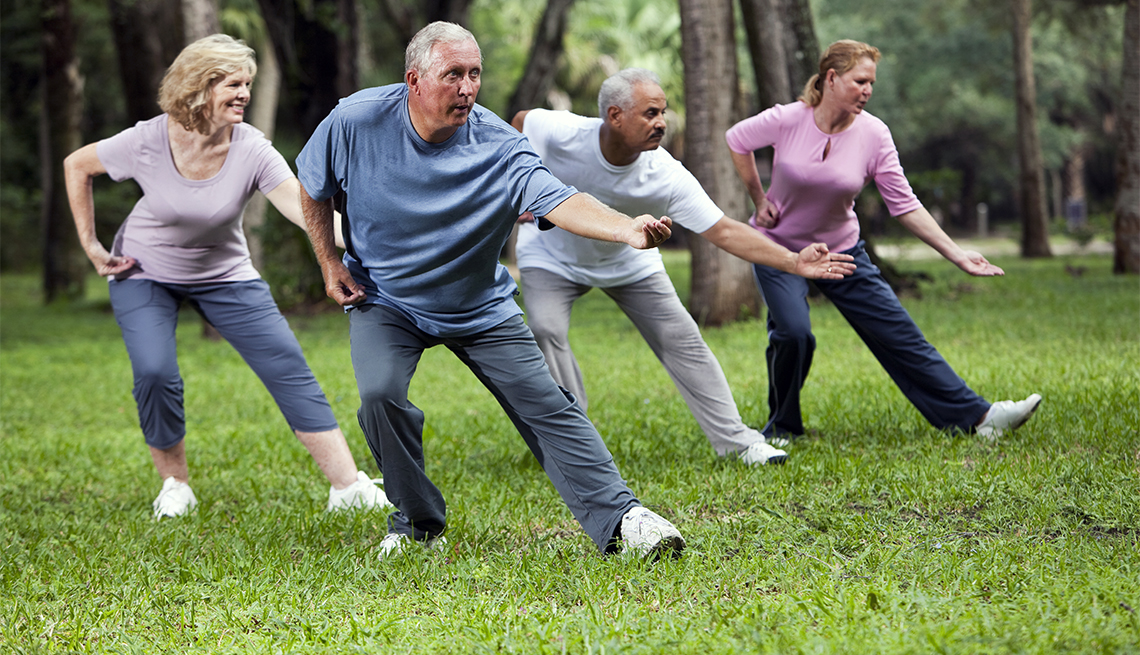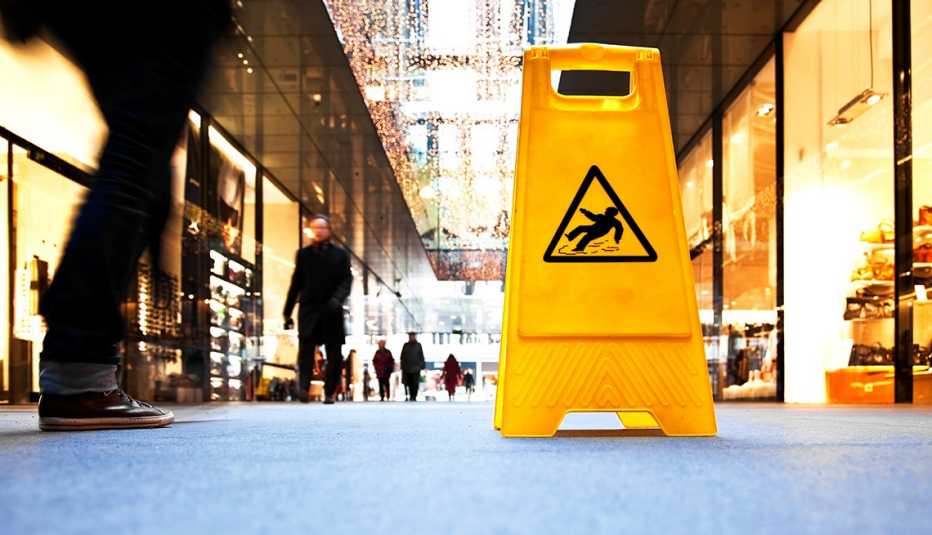AARP Hearing Center
At first glance, tai chi doesn’t seem all that remarkable. There’s no heavy lifting, no charging up sharp inclines at breakneck speed. But don’t be deceived: The practice — a combination of slow, graceful, choreographed movements and meditation that came to our shores from China around the 1940s — has been scientifically linked to a list of live-longer, live-better health and fitness benefits, many of which have particular relevance as we age.
Chief among the benefits is tai chi’s ability to improve balance and prevent falls. “When you’re practicing the movements, you’re shifting your weight from one foot to the other to maintain balance,” says Michael Irwin, a professor of behavioral sciences and director of the Mindful Awareness Research Center at University of California Los Angeles. “By doing (tai chi), you become more aware of the position of your body in space — which is something we become less aware of as we age.”
Tai chi practitioners also learn to "sink into the earth and feel the connection with their feet,” which can help them negotiate uneven surfaces, explains international tai chi fitness expert Scott Cole. A 2015 study published in the journal Arthritis & Rheumatism found the exercise can also help with osteoarthritis, the most common joint disease in midlife, by improving mobility, reducing stiffness, and helping ease pain.
But tai chi, believed to be a centuries-old adaptation of martial arts moves according to the precepts of Chinese medicine, does more than just loosen up your limbs. “When people practice tai chi, there’s a decrease of stress hormones produced by the sympathetic nervous system, which can help lower heart rate and blood pressure,” says Irwin. “That’s similar to the kinds of gains that happen immediately after engaging in more strenuous exercise.” What’s more, by going through the motions with knees slightly bent, you’re working the largest muscle groups in the body — the glutes and quadriceps — which are the first to atrophy as we age.
Tai chi’s soothing effects on the sympathetic nervous system also offer health advantages. A study in the Journal of American Geriatrics found evidence that the ancient art also seems to boost the immune systems of older adults, helping them fend off the viruses that lead to shingles. (In fact, the levels of immunity were comparable to that of people 30 years younger.) And research from the University of Illinois at Urbana-Champaign found that older people had an improved response to the flu vaccine after practicing tai chi.

































































